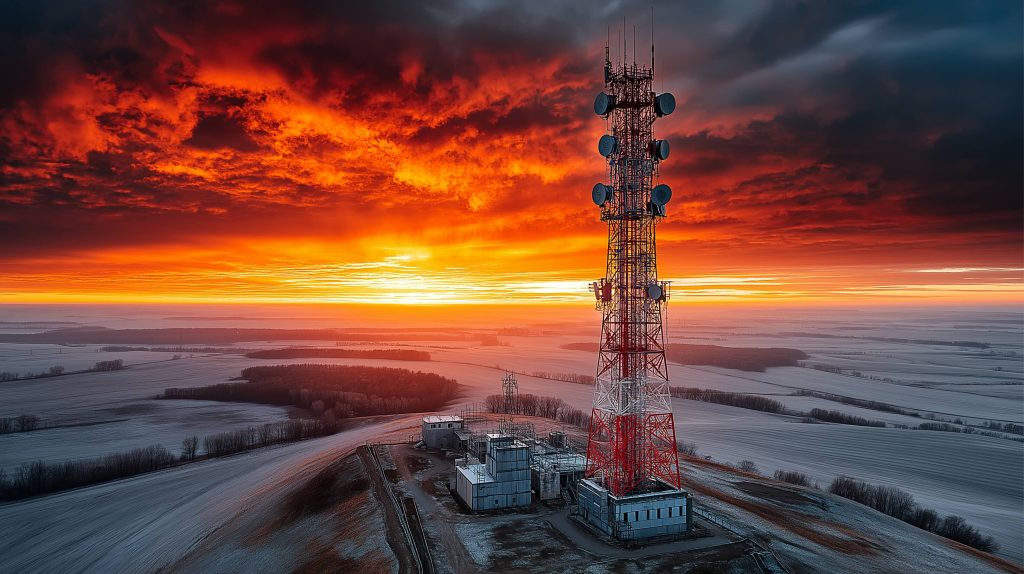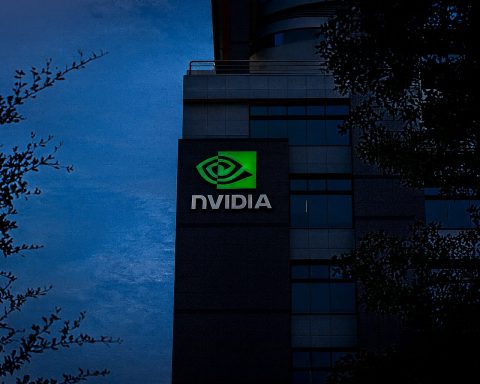- In 2024 Ukrainian startups attracted about $462 million in funding, a 120% YoY rise, with defense-tech startups pulling at least $59 million and the Brave1 fund granting $40 million in grants.
- Creatio, a Kyiv-founded enterprise software startup, became Ukraine’s unicorn in 2024 after raising $200 million at a $1.2 billion valuation, joining six Ukrainian-founded unicorns.
- IT sector export revenues reached $6.45 billion in 2024, down 4% from 2023, with over 300,000 tech specialists (about 238,000 in Ukraine) and up to 668,000 total jobs supported.
- Diia.City grew to 1,396 resident companies by the end of 2024, roughly one-third of which are startups, with a 5% income tax and IP protections.
- On November 1, 2024, Ukraine launched a 5G pilot in three cities to test next-generation networks, with a goal to complete the full launch by 2030 and ensure 5G coexists with military communications.
- SpaceX and Kyivstar announced a Starlink direct-to-cell service for Ukraine, after SpaceX began launching satellites in 2024, with a late-2025 rollout planned to provide satellite-to-mobile coverage.
- By late 2024 Ukraine deployed dozens of AI-powered drone systems, with NORDA Dynamics’ computer-vision software enabling autonomous final targeting and AI-guided drones achieving around 80% hit rates.
- In 2024 Ukraine faced 4,315 cyber incidents, up 70% from 2023, with Russian state-backed hackers targeting energy grids, government databases, and telecoms, culminating in the December 20, 2024 state registries breach attributed to Russia’s GRU that took about two weeks to restore.
- In 2024 Diia online marriage launched, generating over 1.1 million proposals in its first month and 435 marriages, earning Time Magazine’s Best Inventions of 2024.
- By mid-2025 Ukraine opened 86 Diia Centers, deployed Diia.Engine across 20+ ministries, digitized dozens of registries, launched the Urban Planning Cadastre (2024) and the DREAM reconstruction dashboard, and by 2024 had fulfilled 71% of EU Association Agreement requirements in science, tech, innovation, and digital integration.
Introduction: Innovation Under Fire
Despite the ongoing war and economic turmoil, Ukraine’s technology sector has demonstrated remarkable resilience and innovation in 2024 and 2025. From booming startups and record investments to cutting-edge AI-driven drones on the battlefield, Ukraine has accelerated its digital transformation even as it defends itself. Major developments span telecommunications, cybersecurity, infrastructure, military tech, and public sector innovation, painting a picture of a nation leveraging tech as both an economic lifeline and a strategic weapon. As Mykhailo Fedorov – Ukraine’s Deputy PM and Digital Transformation Minister – put it, “Technology is not only the cornerstone of modern defense but also the driver of tomorrow’s stronger GDP”, underscoring the government’s strategy of building an innovative ecosystem to power both security and economic growth [1]. This roundup covers the key tech news and milestones in Ukraine over 2024–2025, with expert insights and source-backed facts from both the private and public sectors.
Startup Boom and Tech Industry Resilience
War-Driven Growth: After a wartime slump, Ukraine’s startup scene roared back in 2024 with a surge in investment. Ukrainian tech companies attracted about $462 million in funding in 2024, a 120% year-over-year jump – the first growth in three years [2]. This rebound was fueled in part by defense-tech startups, which alone drew at least $59 million (13% of total tech investments) as entrepreneurs pivoted to meet military needs [3]. Notably, the state-backed Brave1 fund gave $40 million in grants to defense innovators, and new VC funds (D3, MITS Capital, NEZLAMNI, Green Flag Ventures) emerged to back military tech [4]. As Ihor Samokhodskyi of BRDO observed, “the tech sector is adapting to the realities of war, and defence tech is becoming a crucial part of it… a new, large industry [is] forming within the domestic market” [5].
New Unicorns and Global Reach: Mainstream tech is thriving too. Creatio, a Kyiv-founded enterprise software startup, became Ukraine’s latest unicorn in 2024 after raising $200 million at a $1.2 billion valuation [6] [7]. This makes it one of six Ukrainian-founded unicorns. Other global tech firms with Ukrainian roots (like Grammarly, GitLab, and Revolut) continued to grow, bolstering Ukraine’s reputation in SaaS, fintech, and AI. The broader IT industry remains a cornerstone of the economy, contributing 38% of all service exports – second only to food exports – and about 4.4% of GDP [8]. Even amid war disruptions, IT export revenues in 2024 reached $6.45 billion, down only 4% from 2023 [9], after a smaller 8.5% dip the year prior. The sector still employs over 300,000 tech specialists (with ~238,000 remaining in Ukraine) and sustains up to 668,000 jobs including indirect employment [10] [11]. This talent pool skews senior and highly educated, and remarkably 91% of IT professionals donate part of their income to charity or the military effort [12], reflecting industry-wide support for the country’s defense.
Startup Expansion and Support: Many Ukrainian startups and IT firms have expanded operations abroad to mitigate risk and access new markets. Over half of tech CEOs plan to open offices overseas, with Poland the top destination [13]. Nonetheless, companies keep roots in Ukraine: 97% of tech firms are financially supporting wartime initiatives, and over two-thirds have employees mobilized in the armed forces – often continuing to pay their salaries or hold their positions [14]. To keep the startup engine running, the government has provided tax incentives and legal stability through Diia.City, a special tech industry regime. Diia.City’s ranks more than doubled in 2024 – reaching 1,396 resident companies (about one-third of them startups) by year’s end [15] [16] – thanks to wartime reforms that allowed defense tech manufacturers and offered military service deferments for their employees. In fact, some of Ukraine’s fastest-growing tech firms in 2024 were drone and UAV makers newly admitted to Diia.City [17] [18]. This unique virtual tech zone, with its 5% income tax and IP protections, has become a magnet for both local startups and relocated foreign companies, helping Ukraine maintain its status as a vibrant tech hub even in conflict.
Telecommunications: Connectivity Against All Odds
Resilient Networks: Ukraine’s telecom operators have battled mightily to keep the country connected amid bombing and blackouts. The war has damaged or destroyed thousands of telecom facilities – by early 2024 Russia had knocked out over 4,300 mobile base stations (about a quarter of all cell towers) and cut 30,000 km of fiber-optic cables [19]. Missile strikes even toppled TV towers [20]. Despite this, carriers like Kyivstar, Vodafone Ukraine, and Lifecell adopted “continuous repair mode” to restore service under fire. They deployed backup power generators to counter rolling blackouts and used satellite links where ground lines were down. “The war continues, and the losses are increasing with each passing day,” noted Stanislav Prybytko, a director at the Digital Transformation Ministry, stressing that electronic communications are strategic and any outage has “critical consequences for every sphere” of society [21] [22]. Thanks to such efforts, Ukraine’s internet penetration and mobile usage have remained fairly robust, ensuring civilians, government, and military can communicate when it matters most.
Cyberattack and Recovery: The telecom sector also faced cyber warfare. In December 2023, Kyivstar (Ukraine’s largest mobile operator) suffered a massive cyberattack that temporarily knocked out mobile internet, calls, and SMS nationwide. Kyivstar reported a $95 million financial impact from that incident – not so much in damaged hardware, but in costs of compensating and retaining customers afterwards [23]. Undeterred, Kyivstar announced it will invest $1 billion from 2023 to 2027 to fortify and modernize its networks and digital infrastructure [24]. This includes expanding 4G coverage and preparing for new technologies, even as the company works to phase out high-risk vendors (e.g. replacing Chinese-made network gear) [25]. The war has actually attracted new foreign investment: in 2024, French telecom magnate Xavier Niel (founder of Iliad) acquired Lifecell, Ukraine’s third-largest mobile operator, for $524 million [26]. Niel also bought local ISP Datagroup-Volia, signaling long-term confidence in Ukraine’s market [27]. These investments, rare in an active warzone, will help Ukraine rebuild a state-of-the-art telecom sector post-war.
5G and Satellite Innovations: Remarkably, Ukraine is not letting the war halt progress in telecom technology. In late 2024, the government launched a 5G pilot project in three cities to test next-generation networks [28]. Digital Minister Mykhailo Fedorov announced the two-year pilot on Nov. 1, 2024, aimed at ensuring 5G signals won’t interfere with military equipment [29]. The tests – conducted with the cybersecurity agency and radio frequency service – will verify that 5G can coexist with military communications, given the war context. “5G is capable of transmitting data 10 times faster than 4G… This is one of the key steps towards the full launch of 5G in Ukraine, which we plan to complete by 2030,” Fedorov said [30]. In parallel, Ukraine is embracing satellite connectivity. Elon Musk’s SpaceX reached an agreement with Kyivstar to roll out Starlink “direct-to-cell” service in Ukraine – making it the first conflict zone, and one of the first countries in the world, to get satellite-to-mobile coverage [31]. Starting in late 2025, Ukrainian mobile users in remote or damaged areas will be able to send texts via satellites (with voice and broadband to follow), drastically improving network resilience [32] [33]. This technology essentially turns satellites into orbital cell towers, ensuring that even if terrestrial networks go down, Ukrainians can stay connected. SpaceX began launching the needed satellites in 2024, and Musk personally assured Ukraine’s leadership that Starlink would continue to support the country [34]. These developments in 5G and satellite comms highlight Ukraine’s determination to be “first in Europe” with new telecom tech [35], war be damned.
Artificial Intelligence: From Tech Sector to Battlefield
AI-Powered Drones: Artificial intelligence has rapidly moved from labs to the front lines in Ukraine. By late 2024, Ukraine rolled out dozens of AI-powered systems for its drones to improve targeting and autonomous flight [36]. “There are currently several dozen solutions on the market from Ukrainian manufacturers… they are being purchased and delivered to the armed forces,” confirmed Deputy Defense Minister Kateryna Chernohorenko [37]. These AI algorithms enable cheap FPV (first-person view) drones loaded with explosives to identify and home in on targets without direct human control, even in the presence of intense Russian signal jamming [38] [39]. Electronic warfare has been a major obstacle – Russian jammers can disrupt the radio links of manually piloted drones, causing many to miss. By mid-2024, experienced Ukrainian drone pilots saw strike success rates drop to ~30–50%, and as low as 10% for new pilots, due to jamming [40]. In response, AI guidance is proving a game-changer: tests indicate autonomous drones could achieve hit rates around 80% [41].
Next-Gen Innovation: Both Ukraine and Russia recognize that automation and AI are the “next phase of the war” [42] [43]. “At this point in the conflict, we’re seeing small-scale application of these technologies as multiple developers try to position their drones as the go-to solution,” said Samuel Bendett, a military tech expert, noting that current AI drones use relatively simple, off-the-shelf tech but “more complicated features can also become available” soon [44] [45]. Ukrainian companies like NORDA Dynamics have developed computer vision software that allows a kamikaze drone to visually recognize armored vehicles or other targets and steer itself during the final approach [46]. According to NORDA’s COO Dmytro Vovchuk, their AI-guided drones have already destroyed several Russian tanks and high-value targets which previously would have been too risky or “not cost-effective” to hit due to enemy jamming [47]. Ukraine is also equipping interceptor drones (used to shoot down Russian UAVs) with AI, so they can automatically detect and home in on enemy drones without needing constant pilot inputs [48]. Chernohorenko noted that Russian reconnaissance drones, once a “huge problem,” are now being “shot down rather effectively by our interceptors” enhanced with such tech [49]. These innovations, combining Ukraine’s booming IT talent with battlefield necessity, have arguably made Ukraine a world leader in military AI applications. Outside of warfare, Ukrainian tech firms are also exploring AI in products (from Grammarly’s writing AI to local startups building AI chatbots and voice tools), but the war has undeniably been the biggest catalyst for Ukrainian AI breakthroughs in this period.
Cybersecurity: Battling an Onslaught in Cyberspace
The cyber front in the Russia-Ukraine war has been relentless, and 2024 saw unprecedented cyber attacks on Ukraine’s digital infrastructure. According to Ukraine’s State Service of Special Communications (SSSCIP), the number of cyber incidents spiked by 70% in 2024, with 4,315 attacks recorded (up from 2,541 in 2023) [50]. Russian state-backed hackers consistently targeted critical sectors – energy grids, government databases, security agencies, and telecom networks – aiming to steal sensitive data or cripple services [51]. The most common attack vectors were malware infections and phishing campaigns, often attempting to gather intelligence on Ukraine’s military plans or to sabotage defense industry systems [52]. Officials warn this cyber onslaught will continue into 2025 as an integral part of Russia’s hybrid warfare [53].
Historic Registry Breach: In December 2024, Ukraine suffered what authorities called the largest cyberattack on government systems in its history. Deputy PM Olha Stefanishyna announced that “the largest external cyberattack in recent times” hit Ukraine’s state registries on December 20, causing a major outage [54]. The attack, attributed to Russia’s GRU hacking units, forced the Ministry of Justice’s key databases offline, temporarily suspending vital services from birth, marriage, and property records to certain Diia e-governance services [55] [56]. For Ukrainians already under wartime stress, this digital disruption was deeply felt – the popular Diia mobile app was partially knocked out until backup systems kicked in [57]. Officials said it took about two weeks to fully restore the affected registries [58]. The attackers even claimed to have destroyed data, including backups stored in Poland, though Ukrainian cyber authorities later denied any permanent data loss or leaks [59] [60]. The incident exposed critical vulnerabilities in Ukraine’s government IT systems and “highlighted the urgent need to rethink approaches to building vital digital infrastructure” with more resilience [61]. It also reignited debates about balancing transparency with security: under martial law many open data portals were restricted to prevent Russian targeting, but civil society groups have pushed back on excessive secrecy that could hide corruption [62] [63].
Constant Defense and Offense: Ukrainian cyber teams – including the government’s Computer Emergency Response Team (CERT-UA) and volunteer “IT Army” hackers – have been on high alert. CERT-UA reports foiling numerous intrusion attempts on power companies and railways, while pro-Ukraine hacktivists have carried out retaliatory strikes on Russian government websites and propaganda outlets [64]. Notably, “both Ukrainian and Russian institutions have been subjected to serious cyberattacks” during the war, Reuters observed, with each side probing the other’s weaknesses [65]. One year-defining attack on the Ukrainian side was the December 2023 hack of Kyivstar, the mobile operator, which disrupted telecom services nationwide [66]. On the offensive side, Ukrainian intelligence in mid-2024 reportedly breached multiple Russian ministries and infrastructure firms [67], demonstrating its growing cyber capabilities. To bolster defenses, Ukraine updated its Cybersecurity Strategy through 2025, though by end-2024 only about 50% of its objectives had been met [68] – a sign that capacity building is still underway. International partners have stepped in to help: Western governments and companies like Microsoft have provided threat intelligence, equipment, and training to Ukrainian cyber units. Even so, the cyber war remains an intense and escalating front. As one DarkReading analysis put it, Russia’s cyber onslaught rose dramatically in 2024 yet failed to break Ukraine’s networks or resolve – a testament to Ukrainian cyber resilience [69]. Experts urge continued vigilance in 2025, predicting that cyberspace will remain a “hotspot” of the war where Russia seeks any advantage [70].
Digital Government and Public Sector Innovation
E-Governance Revolution: Ukraine’s government has pressed ahead with ambitious digital transformation plans, war be damned. The flagship Diia platform (the name means “Action” in Ukrainian) has continued to expand services and earn global accolades. As of 2024, the Diia mobile app had over 20 million users and offered 66 government services (130+ services via the web portal) ranging from tax filing to business registration [71] [72]. Ukraine became the first country in the world to grant digital passports the same legal status as physical IDs – meaning Ukrainians can use the Diia app’s digital ID card or passport for identification in daily life without any paper backup [73] [74]. By 2024, Diia provided 33 digital documents (ID, passports, taxpayer card, etc.) and even digital driver’s licenses that are recognized by the EU [75] [76]. This push has turned Ukraine into a pioneer of the “paperless” government concept. “Ukraine became the first country… to introduce a digital passport with full legal equivalence to the paper version,” notes a Harvard case study [77] – a leap that countries like Estonia have not fully taken yet.
New Services Amid War: In response to wartime needs, Ukraine introduced innovative digital services that garnered international praise. In 2024, online marriage via Diia was launched to help couples wed despite separation by war. One partner can propose in the app and, if the other accepts, the couple has a video-call ceremony with an officiant – all legally valid. This world-first “e-wedding” service saw over 1.1 million proposals in its first month and 435 marriages, enabling soldiers and displaced citizens to “carry on with their lives” despite the distance [78] [79]. Time Magazine named Diia’s online marriage one of the *“Best Inventions of 2024,” highlighting Ukraine’s knack for digital problem-solving [80]. Other wartime digital tools include the eEnemy chatbot for citizens to report Russian troop movements, an online Register of Damaged Property for filing war damage claims, and the ePidtrymka (eSupport) program that delivered cash aid and war bond purchases through the app [81]. Together, these helped maintain societal resilience. As Fedorov noted, the war unexpectedly “accelerated adaptation and prompted new services that became essential” beyond the original digitalization plan [82].
Streamlined Services and EU Integration: Even under martial law, Ukraine pressed on with deep structural reforms in public IT systems. By mid-2025, the government had opened 86 high-tech Diia Centers – one-stop service hubs that combine traditional admin offices with Diia’s digital ecosystem for streamlined in-person help [83]. These modern Centers access interlinked registries via the Trembita data exchange system (launched 2019) so staff can verify citizens’ data instantly, eliminating paper forms and long waits [84] [85]. Additionally, Ukraine digitized dozens of state registries onto a new open-source platform called Diia.Engine, a low-code solution that enables rapid deployment of e-services [86]. Over 20 ministries are already using Diia.Engine to automate workflows and integrate their databases [87]. This facilitated projects like the Urban Planning Cadastre (launched 2024 to unify construction permit data) [88] [89] and DREAM, a public dashboard tracking every reconstruction project in real time to ensure transparency in rebuilding war damage [90]. These efforts align with Ukraine’s drive towards European Union standards: by end of 2024, Ukraine had fulfilled 71% of EU Association Agreement requirements in science, tech, innovation, and digital integration [91]. The government is actively aligning laws on data protection, digital services, and even future AI regulation with EU norms as it seeks EU membership [92]. For example, Ukraine is part of the EU’s pilot on a Digital Identity Wallet, aiming for mutual recognition of Diia’s digital IDs across Europe [93].
Public Sector Wins and Challenges: The Ministry of Digital Transformation, led by Fedorov, has become a powerhouse in Kyiv’s wartime cabinet, often touted as a model for other countries. Ukraine’s success in e-government prompted Estonia’s e-Governance Academy to declare Ukraine “digital by design,” citing how quickly new services rolled out even in crisis [94]. The Diia model (sometimes called “Government in a Smartphone”) is now an exportable asset – Ukraine is in talks to share its e-government solutions with other nations as a form of “digital diplomacy” [95]. However, challenges remain. Internet access inequality has grown under war conditions – rural usage fell from 74% to 67% in 2024, and older Ukrainians struggle with digital services (only 22% of those over 70 use them) [96] [97]. A fall 2024 survey found overall usage of e-government services dropped to 55%, down from 64% in 2023 [98], likely due to displacement and connectivity issues. The government has launched digital literacy campaigns and even a Diia.Digital Community program to bring rural areas online [99] [100]. Cybersecurity is another concern – the December 2024 registry hack showed gaps in protection [101]. And while Ukraine passed a Law on Virtual Assets to legalize cryptocurrency markets, it has languished without implementation as tax code amendments stalled [102]. Still, Ukraine’s public sector tech innovation has largely maintained momentum. The Diia.City economic zone continued to draw IT businesses (889 new companies in 2024 alone) and even broadened to include UAV manufacturers and defense startups under its tax-friendly umbrella [103]. All told, Ukraine’s government transformation – from digitizing bureaucracy to fostering IT industry growth – did not just survive the war’s second year, it thrived, setting a precedent for governance under extreme adversity.
Military Tech and Defense Innovation
Drones: The World’s First Drone War: The Russo-Ukrainian war has often been called the first full-scale drone war, and 2024 underscored that reality. Ukraine’s military and startup community have co-created a dizzying array of unmanned systems to offset Russia’s numerical advantages in troops and artillery. Do-it-yourself drone workshops proliferated—“an ecosystem of laboratories in hundreds of secret workshops… to create a robot army,” as one U.S. News report described [104]. By late 2024, Ukraine was reportedly producing drones in the millions per year (including cheap FPV kamikaze drones) to meet front-line demand [105]. Drones are used for everything: intelligence, artillery spotting, and striking targets from ammo depots to tanks. To counter Russia’s Iranian-made Shahed kamikaze drones, Ukrainian firms developed dozens of interceptor UAV models. The government even held a competition in April 2024 to identify the best interceptor designs, resulting in at least one system now credited with ~20 confirmed kills of enemy spy drones and deployed to frontlines in Kharkiv, Kursk, and Zaporizhzhia [106] [107]. Ukraine also achieved something significant – reducing reliance on foreign drone imports. By 2024, domestic drone producers rolled out effective alternatives to the Chinese DJI drones that both sides had heavily used [108] [109]. This move lessened Ukraine’s vulnerability to supply chain disruptions (as China at times restricted drone sales).
AI, Swarms, and Long-Range Strikes: Many of Ukraine’s 2024 defense tech advances were iterative, but some crossed into new territory. One major focus was integrating artificial intelligence into drones, as noted earlier. By late 2024 Ukrainian developers had drones that could “lock onto targets identified by operators during the final phase of flight,” overcoming Russian jamming by guiding themselves in the critical last seconds [110]. The next goal for 2025 is AI throughout the drone’s flight, not just at final targeting [111] [112] – effectively fully autonomous strike drones. Ukraine also began experimenting with drone swarm tactics. Military units are evolving from the traditional “one drone, one operator” setup toward coordinating swarms of drones controlled by a single system or team, which could overwhelm enemy defenses. Officials say expanding swarm usage is a strategic priority for 2025, and it’s “critical for Ukraine to outpace the enemy” in deploying this next-gen capability [113]. On the offensive front, Ukraine stunned observers by bringing the fight to Russian soil using long-range drones and missiles developed domestically. Starting in mid-2023 and through 2024, mysterious explosions struck airbases and infrastructure deep inside Russia – many attributed to new Ukrainian long-range strike drones with ranges exceeding 1,000 km [114] [115]. By late 2024, Russia’s capital Moscow endured repeated drone strikes on military targets, proving nowhere was out of reach. These drones (often officially unnamed due to secrecy) signaled that Ukraine’s domestic missile program had also leapt forward. In fact, Ukraine’s indigenous missile development “gained pace in 2024” and is expected to play a far greater role in 2025, giving Ukraine the ability to hit strategic targets at long range even when allies are hesitant to provide long-range weapons [116]. Western experts believe Russia may be surprised at how advanced Ukraine’s homegrown missiles have become [117].
Defense Startups and Funding: The war has catalyzed a defense-tech startup boom in Ukraine unlike anything seen in Europe in decades. What was pre-war a Soviet-legacy arms industry is now a “healthy landscape” of roughly 500 private arms producers rapidly prototyping and field-testing new tech [118] [119]. These range from one-man garage inventors to spun-off IT companies building software for battle. Venture capital investment in Ukrainian defense startups is rising fast. A Kyiv startup funding report showed defense tech investments quadrupled in 2024, and could exceed $100 million in 2025 [120]. European investors especially are jumping in: “marked interest” from funds in Scandinavia, the Baltics, and the UK was noted after concerns grew that the U.S. might scale back aid [121] [122]. Deborah Fairlamb of Green Flag VC said this was “extremely noteworthy” as European countries realize they need to support and benefit from Ukraine’s defense innovations [123] [124]. The Ukrainian government too is funding innovation aggressively. It pumped over 50% of its 2023 budget into defense (about $30.8 billion, 20× the pre-war level) [125], and created fast-track procurement processes to get new tech from concept to battlefield in months. Under an adopted “Danish model,” European nations finance certified Ukrainian arms manufacturers directly, speeding up delivery [126]. As a result, what used to take over a year in peacetime now gets approved in 3–6 months – an “incredible development for start-ups,” notes Daniel Bilak, a lawyer-turned-soldier involved in defense ventures [127] [128]. Bilak emphasizes that necessity has made Ukraine’s military tech ecosystem uniquely agile: “Our military tech is just miles ahead of where everyone else is – nobody can innovate as quickly as we can because we have to,” he said [129] [130].
Global Support and Future Outlook: International partners are also directly supporting Ukraine’s defense tech efforts. In mid-2023, Ukraine, the EU, and NATO launched the “BRAVE1” initiative – a coordinated platform and fund to nurture battlefield tech “game-changers.” Through 2024, Brave1 (managed by Ukraine’s Ministry of Digital Transformation) provided 470+ grants totaling ₴1.3 billion (~€29 million) to defense startups, focusing on drones, anti-drone systems, and robotics [131] [132]. By July 2025, plans were underway for a joint EU-Ukraine fund (BraveTech initiative) around €100 million to further scale up R&D in AI, cyber, and missile technology [133] [134]. Crowdfunding has played a part too: President Zelensky’s United24 platform raised over $1 billion globally, with about $930 million channeled to Ukraine’s armed forces in three years [135] [136]. Some of that funded experimental projects like unmanned de-mining robots and remote-controlled gun turrets. Meanwhile, traditional arms aid continued (e.g. drones from allies, Western air defense systems), but Ukraine’s focus is clearly on self-reliance through tech. The coming year will likely see Ukraine double down on innovations in anti-drone defense (to counter evolving Russian UAVs) [137], electronic warfare tools, and perhaps more surprises in high-tech weaponry. Missiles, drone swarms, space assets – all are on the table as Ukraine strives to maintain its qualitative edge. As one Atlantic Council analysis noted, technological creativity, speed, and coordination are now “a constant struggle” in modern war – any delay in moving new tech from development to deployment can be deadly [138]. Ukraine has learned that lesson well, essentially turning its battlefields into a testing ground for the next generation of warfare.
Conclusion: A Digital Nation Forged by War
In summary, Ukraine’s tech sector navigated the crucible of war in 2024–2025 with ingenuity and grit. The country witnessed a resurgence of startup funding and the birth of new unicorns even as missiles fell, proving investor faith in Ukraine’s talent. Its telecommunications providers kept people online through blackouts and laid groundwork for 5G and satellite services that many peaceful countries haven’t achieved. Ukrainian engineers and soldiers pioneered AI-guided drones and other innovations that are reshaping military doctrine worldwide. On the cyber front, Ukraine endured a blitz of digital attacks yet strengthened its defenses and continued delivering digital public services to citizens. The government’s digital transformation agenda not only survived but accelerated – Ukrainians can now marry, pay taxes, or claim aid on a smartphone app in the midst of a war, a testament to the nation’s “mobile-first” mindset.
The war has, in effect, forged Ukraine into a bold technology laboratory, speeding up reforms and spurring inventions out of sheer necessity. As one volunteer soldier-innovator quipped, “the only way we could defeat the Russians was through technological advancement” [139]. That mentality has permeated all sectors. Looking ahead, 2025 promises further integration of Ukraine’s tech economy with Europe, more milestones in e-governance (like digital EU IDs and perhaps a revived virtual assets market), and continued prominence of defense tech on the global stage. Ukraine’s experience shows how a nation can turn adversity into a springboard for innovation. In the words of an American VC backing Kyiv’s startups, “this country has an incredible network behind the scenes” driving its tech success [140]. Ukraine’s ability to harness code, connectivity, and creativity may well be remembered as a decisive factor in its resilience – proving that even under bombardment, a digital nation can not only survive but also lead [141] [142].
Sources:
- VoxUkraine – State Digital Transformation in Ukraine: 2019–2024 Review [143] [144]
- Reuters – Cyberattack on Ukraine’s State Registries (Dec 2024) [145] [146]; Ukraine’s AI Drones [147] [148]; Creatio Unicorn Funding [149]; Kyivstar-Starlink Deal [150] [151]
- The Defender (AVentures) – Ukraine Tech Investment 2024 DealBook [152] [153]
- Lviv IT Cluster – IT Research Ukraine 2024 Report [154] [155]
- Euronews – Telecom Infrastructure Damage & Rebuild Cost [156] [157]; Ukraine’s Homegrown Defense Tech [158] [159]
- Kyiv Independent – Ukraine Launches 5G Pilot [160] [161]
- Ukrainska Pravda – Cyberattacks up 70% in 2024 (CERT-UA) [162] [163]
- TIME Magazine – Diia Online Marriage – Best Inventions 2024 [164]
- Atlantic Council – Ukraine’s 2025 Defense Tech Priorities [165] [166]
- BRDO – Diia.City 2024 Results [167] [168]
- Euronews – Interview with Daniel Bilak on Military Tech [169] [170]
- Reuters – Mass Cyberattack on Kyivstar (LightReading summary) [171] and Lifecell Acquisition [172].
References
1. itcluster.lviv.ua, 2. thedefender.media, 3. thedefender.media, 4. thedefender.media, 5. brdo.com.ua, 6. thedefender.media, 7. www.reuters.com, 8. itcluster.lviv.ua, 9. en.interfax.com.ua, 10. itcluster.lviv.ua, 11. itcluster.lviv.ua, 12. itcluster.lviv.ua, 13. itcluster.lviv.ua, 14. itcluster.lviv.ua, 15. brdo.com.ua, 16. brdo.com.ua, 17. brdo.com.ua, 18. brdo.com.ua, 19. www.euronews.com, 20. www.euronews.com, 21. www.euronews.com, 22. www.euronews.com, 23. www.lightreading.com, 24. www.lightreading.com, 25. www.lightreading.com, 26. www.lightreading.com, 27. www.lightreading.com, 28. kyivindependent.com, 29. kyivindependent.com, 30. kyivindependent.com, 31. www.reuters.com, 32. www.reuters.com, 33. www.reuters.com, 34. www.reuters.com, 35. ukrainetoday.org, 36. www.reuters.com, 37. www.reuters.com, 38. www.reuters.com, 39. www.reuters.com, 40. www.reuters.com, 41. www.reuters.com, 42. www.reuters.com, 43. www.reuters.com, 44. www.reuters.com, 45. www.reuters.com, 46. www.reuters.com, 47. www.reuters.com, 48. www.reuters.com, 49. www.reuters.com, 50. www.pravda.com.ua, 51. www.pravda.com.ua, 52. www.pravda.com.ua, 53. www.pravda.com.ua, 54. www.reuters.com, 55. www.reuters.com, 56. voxukraine.org, 57. voxukraine.org, 58. www.reuters.com, 59. www.pravda.com.ua, 60. www.pravda.com.ua, 61. voxukraine.org, 62. voxukraine.org, 63. voxukraine.org, 64. www.reuters.com, 65. www.reuters.com, 66. www.reuters.com, 67. www.reuters.com, 68. voxukraine.org, 69. www.darkreading.com, 70. www.pravda.com.ua, 71. www.kyivgovtechcentre.org, 72. ukraine.ua, 73. voxukraine.org, 74. voxukraine.org, 75. voxukraine.org, 76. voxukraine.org, 77. voxukraine.org, 78. time.com, 79. time.com, 80. time.com, 81. voxukraine.org, 82. voxukraine.org, 83. voxukraine.org, 84. voxukraine.org, 85. voxukraine.org, 86. voxukraine.org, 87. voxukraine.org, 88. voxukraine.org, 89. voxukraine.org, 90. voxukraine.org, 91. voxukraine.org, 92. voxukraine.org, 93. voxukraine.org, 94. ega.ee, 95. voxukraine.org, 96. voxukraine.org, 97. voxukraine.org, 98. voxukraine.org, 99. voxukraine.org, 100. voxukraine.org, 101. voxukraine.org, 102. voxukraine.org, 103. brdo.com.ua, 104. www.usnews.com, 105. www.euronews.com, 106. www.atlanticcouncil.org, 107. www.atlanticcouncil.org, 108. www.atlanticcouncil.org, 109. www.atlanticcouncil.org, 110. www.atlanticcouncil.org, 111. www.atlanticcouncil.org, 112. www.atlanticcouncil.org, 113. www.atlanticcouncil.org, 114. www.atlanticcouncil.org, 115. www.atlanticcouncil.org, 116. www.atlanticcouncil.org, 117. www.atlanticcouncil.org, 118. www.euronews.com, 119. www.euronews.com, 120. thedefender.media, 121. www.euronews.com, 122. www.euronews.com, 123. www.euronews.com, 124. www.euronews.com, 125. www.euronews.com, 126. www.euronews.com, 127. www.euronews.com, 128. www.euronews.com, 129. www.euronews.com, 130. www.euronews.com, 131. www.euronews.com, 132. www.euronews.com, 133. thedefender.media, 134. thedefender.media, 135. www.euronews.com, 136. www.euronews.com, 137. www.atlanticcouncil.org, 138. www.atlanticcouncil.org, 139. www.euronews.com, 140. www.euronews.com, 141. www.euronews.com, 142. www.euronews.com, 143. voxukraine.org, 144. voxukraine.org, 145. www.reuters.com, 146. www.reuters.com, 147. www.reuters.com, 148. www.reuters.com, 149. www.reuters.com, 150. www.reuters.com, 151. www.reuters.com, 152. thedefender.media, 153. thedefender.media, 154. itcluster.lviv.ua, 155. itcluster.lviv.ua, 156. www.euronews.com, 157. www.euronews.com, 158. www.euronews.com, 159. www.euronews.com, 160. kyivindependent.com, 161. kyivindependent.com, 162. www.pravda.com.ua, 163. www.pravda.com.ua, 164. time.com, 165. www.atlanticcouncil.org, 166. www.atlanticcouncil.org, 167. brdo.com.ua, 168. brdo.com.ua, 169. www.euronews.com, 170. www.euronews.com, 171. www.lightreading.com, 172. www.lightreading.com










